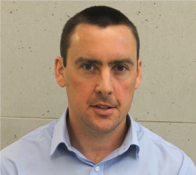S3 - EMC Simulations
Session 3: EMC Simulations
Session chair |
Dr Tamara Monti |
Biography |
Tamara MONTI is the Education business leader for global software company Dassault Systèmes in Northern Europe, with the main objective to empower the workforce of the future. She is working closely with Education and Industry leaders to demonstrate the value of the 3DExperience platform to upskill all engineers to speed up sustainable innovation. She earned a PhD degree in Electromagnetics in 2013. She has been a visiting researcher at the Trieste Synchrotron, at Temple University of Philadelphia and at the University of Maryland at College Park working on microwave nanotechnology. She held a postdoctoral position at the University of Nottingham from 2014 to 2017 on high power microwave material processing. In 2017, she joined CST, subsequently acquired by Dassault Systèmes as part the SIMULIA brand, where she was one of the computational electromagnetic experts, supporting customers in the transportation and mobility industries. |
| Session Description |
The modelling of electromagnetic systems has become both feasible and affordable in the last few decades. This has been enabled by the availability of powerful but affordable computing in addition to a number of software systems which enable not only the solution of the physics of the interaction of electromagnetic fields with the geometry of concern but also the modelling of that geometry. There are still a number of challenges in the use and acceptance of the modelling of electromagnetic interactions, including validation, visualisation and assimilation of results and the modelling of diffusive materials and non-linearities. |
Speaker 1 |
Dr Chris Davenport |
| Title | Design and optimisation of electric vehicle RF filters through simulation and measurement |
| Summary |
Electric vehicle propulsion systems can require filters in order to reduce RF noise coupled between high and low voltage networks and their connected systems. Electromagnetic simulation has led the way in both the design and evaluation of various filter architectures, which have then been prototyped and tested on physical EV systems to reduce their conducted and radiated emissions. The key challenges, learnings, and successes of this wide project are to be presented. |
|
Biography
|
Chris Davenport is currently Technical Specialist in Electromagnetics Simulation at JLR. He has been at JLR since 2018, leading a range of simulation activities on high frequency radars, connectivity antennas, and battery and propulsion EMC. He is currently working within a cross-discipline team to deliver EMC solutions for JLR’s next generation electric vehicles; focussing on the impact electromagnetic simulation can have in reducing radiated and conducted emissions. Chris has extensive RF simulation and measurement experience, completing his PhD on frequency selective structures, and working at BAE Systems, Rolls-Royce, and JLR over the past decade; advocating for the use of EM simulation in design and evaluation activities. |
Speaker 2 |
Dr Graham Robert |
| Title | Echoes in a Biscuit Tin |
| Summary |
Simulation of cavity resonance, comparison with a low-cost real-life demonstrator and some investigation of what is going on inside. The presentation will showcase cavity resonance, as well as simulations and measurements of a more robustly constructed, well-controlled demonstrator with a more detailed exploration of what occurs inside the tin box. Interestingly, it turns out that the resonant frequency of a Quality Street tin is approximately 1GHz. |
|
Biography
|
Graham is a Lead EMC Engineer at Leonardo. He graduated from Warwick University with a masters degree in electronic engineering (2006) and a PhD in power semiconductor modelling (2011). Since then he has worked in industry on power electronics products handling powers of a few watts to several megawatts, taking a keen interest in the EMC side of those products. He now specialises in EMC. |
Speaker 3 |
Dr. Sajid AsifIndustry Process Consultant, DASSAULT SYSTEMES |
| Title |
Introduction to EMC Simulation |
| Summary |
Electromagnetic compatibility (EMC) describes the ability of a device to operate as intended in its environment without interfering with other devices. By law, products must comply with international EMC standards which regulate EM emissions and the susceptibility of electrical and electronic systems in order to be sold. The earlier a potential EMC problem is identified, the less disruption it causes to the design process. By including EMC compliant design at an early stage, additional costly development iterations can be avoided later on. During this presentation we will demonstrate how you can use virtual prototypes to investigate and rectify the emission levels of your system before the product is built. After an overview of the EMC simulation capabilities, some specific topics will be discussed in more detail. |
|
Biography |
Sajid Asif, an Industry Process Consultant at Dassault Systemes, leads SIMULIA EuroNorth's technical sales engagements, specializing in Electromagnetics technology across multiple industries. Previously, as an Antenna Engineer at Celestia UK, he focused on designing, developing, and testing passive RF/microwave circuits and phased array antennas for Satcom and terrestrial applications. Alongside his industry work, he served as a Researcher and Lecturer at various academic institutions. Besides his B.Sc. and M.Sc. degrees, Dr. Asif also holds a PhD in Electrical & Computer Engineering from North Dakota State University, USA. He is a member of IET and holds senior membership in IEEE. |
Book Conference Sessions

Emgineering Ltd
Registered in the UK No 10505134
Useful Links
Subscribe
Copyright © 2024 EMC & Compliance International All right reserved | Website Design and Development by Fifteen.






